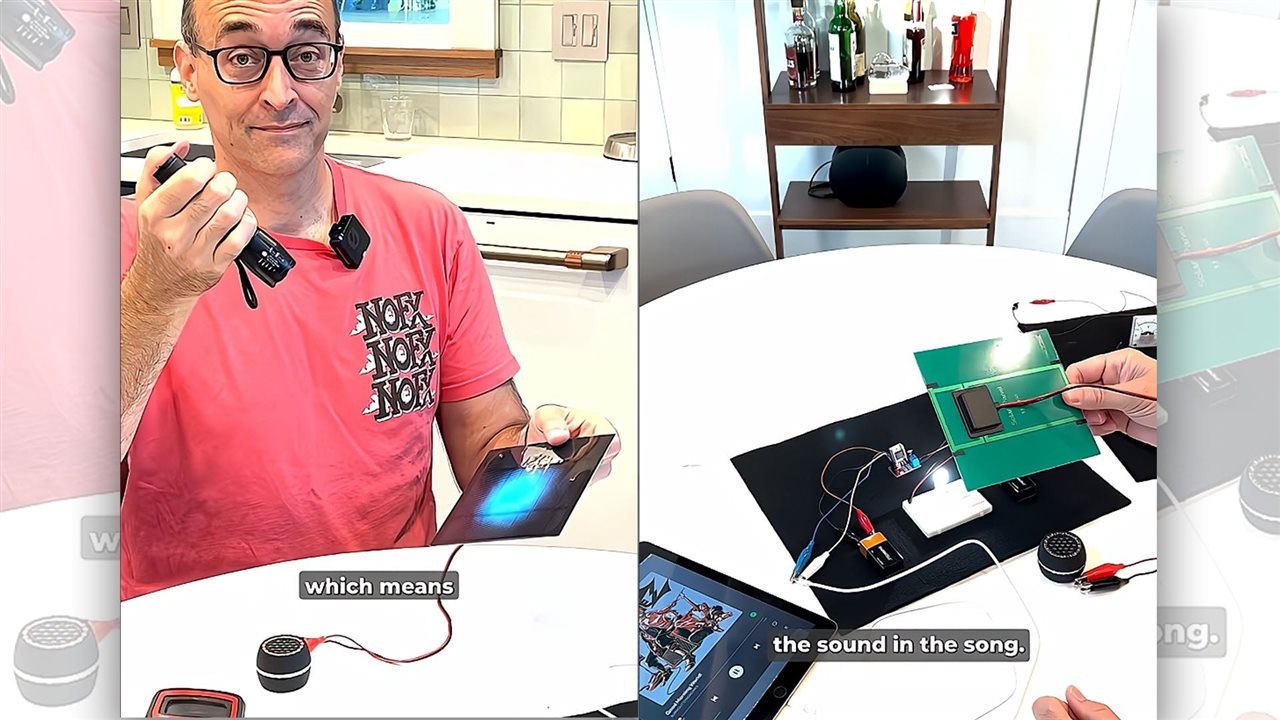
Chemistry teacher Phillip Cook noticed that when he fired a laser at a solar panel, it emitted sound. Cook found that he could wirelessly transmit sound, with the solar panel acting as a receiver. (Image credit Phillip Cook via YouTube)
Chemistry teacher Phillip Cook discovered he could transmit sound wirelessly by firing a laser at a solar panel connected to a small speaker. His discovery led him to experiment further using an iPad as an audio source, which Cook then passed through an LED. As the music played, the LEDs’ light output fluctuated in sync with the sound. On the receiving end, a small solar panel detected those changes in light sensitivity and converted them into a signal that drove the connected speaker.
The setup worked, but the LED had one drawback: the beam spread was too wide, making it inefficient at longer distances. To overcome that challenge, Cook swapped in a red laser diode, which narrowed and focused the beam, delivering a cleaner transmission across his living room. Of course, the sound quality wasn’t the best, but the music was recognizable and clear enough to understand the song lyrics.
As with most optical experiments, distance is the top limiting factor. Cook noted that the signal dropped sharply the further away he moved the speaker, where just a few inches could result in signal loss. While Cook’s experiment worked, the technology has been in use for decades, with the military using it for satellite communications and telecoms, basing it on fiber-optic, high-speed communications.
Have a story tip? Message me here at element14.
